How to see the world's most impressive natural phenomena in style
Enjoy all that Mother Nature has to offer with these once-in-a-lifetime experiences
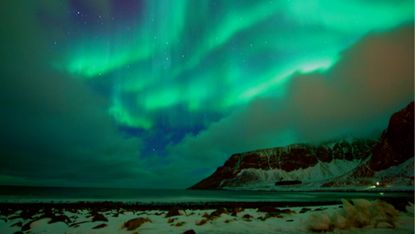
The Earth is more extraordinary than we could ever imagine. From the Northern lights to the Sea of Stars, nature can sometimes seem like magic.
If you are looking to turn your holiday into a once-in-a-lifetime experience, here are some of the world's most spectacular natural phenomena – and how to catch them in style:
The Great Blue Hole, Belize
Subscribe to The Week
Escape your echo chamber. Get the facts behind the news, plus analysis from multiple perspectives.

Sign up for The Week's Free Newsletters
From our morning news briefing to a weekly Good News Newsletter, get the best of The Week delivered directly to your inbox.
From our morning news briefing to a weekly Good News Newsletter, get the best of The Week delivered directly to your inbox.
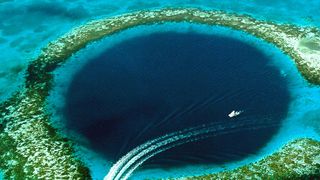
Originally a limestone cave above sea level, the Great Blue Hole was formed thousands of years ago when water levels rose and flooded the chasm.
Known as a diver's paradise, the darker hue of blue within this circle of water indicates the great depth it holds in comparison to the surrounding shallows. This means divers can explore what is essentially a vertical underwater cave that's 412ft deep.
For a splash of splendour, rent a speedboat and ride the dark surface of this aquatic anomaly. There is also the option to dive into the crystal clear waters and explore the exceptional marine life.
Northern Lights
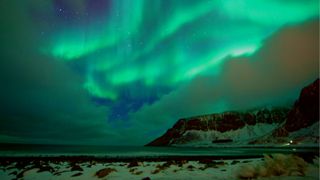
This nocturnal spectacle of aurora is a result of geomagnetic activity. When charged electrons in solar winds interact with the atmosphere of Earth's Northern Hemisphere, the night lights come out to play.
To catch this dazzling display in a luxurious setting, there are several Snow Hotels that have been set up specifically for Northern Light hunters. From the glamorous glass-cased igloo villages of the Finnish Laplands to the mountainous lava field hotels of Iceland, you can enjoy extravagant front row seats to Mother Nature's greatest show.
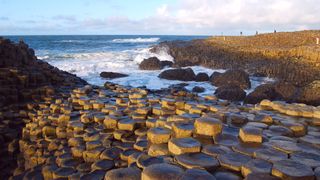
Giant's Causeway, Northern Ireland
While many attribute its existence to that of a mythical giant, the science behind this phenomenon is just as grand. Around 60 million years ago, a volcanic eruption spewed lava onto the Earth's surface, which then hardened into the polygonal pattern of pillars that make up the causeway today.
For the best view, rent a helicopter and enjoy the 40,000 interlocked basalt columns from above, along with Northern Ireland's other gems, such as Rathlin Island and Binevenagh's cliffs.
Sea of Stars, Maldives
This surreal spectacle is found in the waters of Vaadhoo Island and owes its name – 'sea of stars' – to its breathtaking resemblance to a starry night sky.
Marine bioluminescence occurs when a luminous species of phytoplankton called Lingulodinium polyedrum are put under stress. They emit a blue light when affected and create a glow that resembles blue embers burning underwater.
The bioluminescent waves can be seen from other islands in the Maldives and experienced in myriad ways, ranging from glass-bottomed Jacuzzi tubs and night-time scuba diving to an underwater wine cellar.
Abraham Lake's frozen bubbles
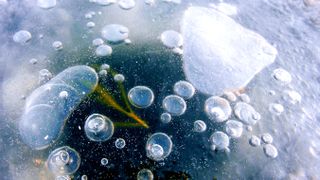
Located in Alberta, Canada, these kaleidoscopic ice bubbles consist not of water, but the highly flammable gas methane.
Methane leaks into the water from organic matter and makes its way up to the surface to evaporate, but in the winter, the lake freezes the bubbles in their journey, trapping them until the ice melts.
To enjoy the ice bubbles up close, try ice skating over its frozen surface. Not only will you have the mountains around you, but those winter jewels will be just below your feet. However, adventurers be warned – the bubbles can be quite dangerous when cracked open near a spark.
Create an account with the same email registered to your subscription to unlock access.
Sign up for Today's Best Articles in your inbox
A free daily email with the biggest news stories of the day – and the best features from TheWeek.com
-
 'Good riddance to the televised presidential debate'
'Good riddance to the televised presidential debate'Instant Opinion Opinion, comment and editorials of the day
By Harold Maass, The Week US Published
-
 Caitlin Clark the No. 1 pick in bullish WNBA Draft
Caitlin Clark the No. 1 pick in bullish WNBA DraftSpeed Read As expected, she went to the Indiana Fever
By Peter Weber, The Week US Published
-
 Today's political cartoons - April 16, 2024
Today's political cartoons - April 16, 2024Cartoons Tuesday's cartoons - sleepyhead, little people, and more
By The Week US Published
-
 Christina Sharpe, the influential author and intellectual who sees America as it is
Christina Sharpe, the influential author and intellectual who sees America as it isThe Explainer Sharpe reshapes words and concepts to better know Blackness and the United States
By Scott Hocker, The Week US Published
-
 Viking parenting: the Scandi secret to raising happy children?
Viking parenting: the Scandi secret to raising happy children?Under The Radar 'Risky' Danish approach encourages independence in children, but it might not suit all families
By Chas Newkey-Burden, The Week UK Published
-
 St Patrick's Day: indulge in Irish delights
St Patrick's Day: indulge in Irish delightsThe Week Recommends Discover delicious recipes inspired by Ireland to celebrate the country's patron saint's day
By Rebekah Evans, The Week UK Published
-
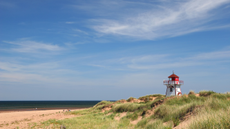 Prince Edward Island travel guide: walking, wellness and picturesque landscapes
Prince Edward Island travel guide: walking, wellness and picturesque landscapesThe Week Recommends Canada's smallest province has plenty to offer history buffs and culture seekers
By Yasemen Kaner-White Published
-
 'True Detective: Night Country' and the rise of Arctic Noir
'True Detective: Night Country' and the rise of Arctic NoirThe Week Recommends Why we love police procedurals set in the bleak and remote polar extremes
By David Faris Published
-
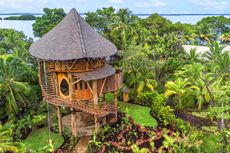 5 unusual accommodations in North and Central America
5 unusual accommodations in North and Central AmericaThe Week Recommends These properties offer an escape from the ordinary
By Catherine Garcia, The Week US Published
-
 The Westbury Hotel review: stunning suites in charming Dublin
The Westbury Hotel review: stunning suites in charming DublinThe Week Recommends This hotel is the perfect spot to while away a weekend in Ireland's capital
By Kaye O'Doherty Published
-
 7 destinations to visit this winter
7 destinations to visit this winterThe Week Recommends Have a ball in Vienna, and hang with the penguins in Patagonia
By Catherine Garcia, The Week US Published